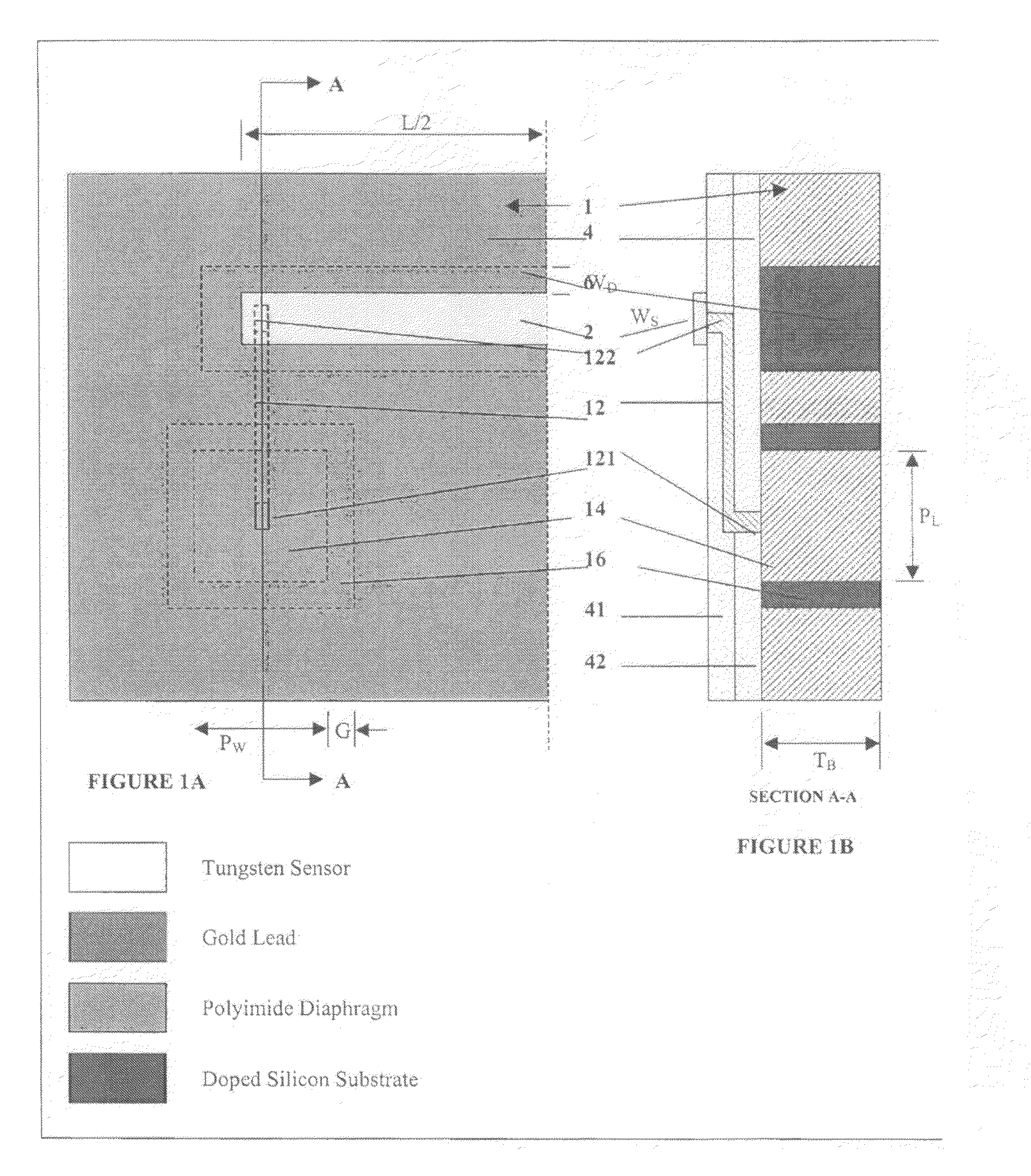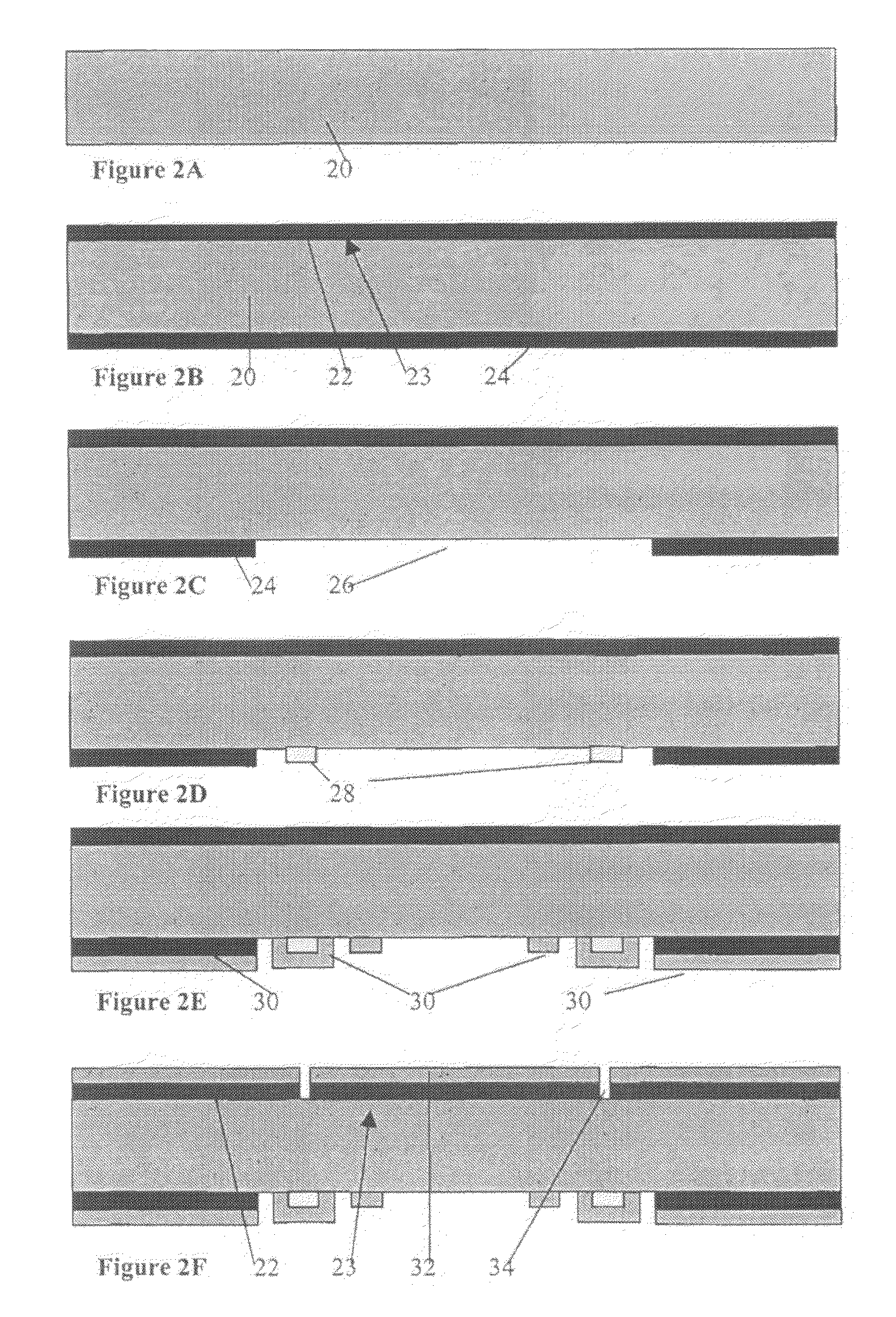Sensor device
a technology of sensor device and sensor body, which is applied in the direction of photovoltaics, fluid speed measurement using thermal variables, volume/mass flow by thermal effects, etc., can solve the problem that the device is not suitable for an aircraft in service, and achieve the effect of reducing the heat loss from the element to the surrounding parts
- Summary
- Abstract
- Description
- Claims
- Application Information
AI Technical Summary
Benefits of technology
Problems solved by technology
Method used
Image
Examples
third embodiment
Device Build
[0084]The fabrication sequence was modified in the light of the above, and the third embodiment is shown in FIG. 8 as the following sequence: Similar parts to those of FIG. 2 are denoted by the same reference numeral.
[0085]FIG. 8A Silicon wafer 20 250 μm thick, heavily doped with As-resistivity 0.0001-0.004 ohm cm is provided.
[0086]FIG. 8B Deposit 0.3 μm silicon oxide film 24 on rear face only.
[0087]FIG. 8C Etch oxide layer 24 on reverse to expose silicon substrate as at 26.
[0088]FIG. 8D Deposit a 0.3 μm tungsten adhesion / diffusion barrier layer 80, followed by a 0.5 μm gold layer 81 on exposed silicon substrate 26. Etch to form back contacts 28.
[0089]FIG. 8E Deposit 0.1 μm tungsten, etch to form top ohmic contacts 82, To improve conductivity, the tungsten layer was deposited on the top side of the wafer prior to any other processing on this face, i.e. before any significant contamination could be introduced. The tungsten layer was patterned to give 400 μm square contact...
PUM
 Login to View More
Login to View More Abstract
Description
Claims
Application Information
 Login to View More
Login to View More - R&D
- Intellectual Property
- Life Sciences
- Materials
- Tech Scout
- Unparalleled Data Quality
- Higher Quality Content
- 60% Fewer Hallucinations
Browse by: Latest US Patents, China's latest patents, Technical Efficacy Thesaurus, Application Domain, Technology Topic, Popular Technical Reports.
© 2025 PatSnap. All rights reserved.Legal|Privacy policy|Modern Slavery Act Transparency Statement|Sitemap|About US| Contact US: help@patsnap.com



